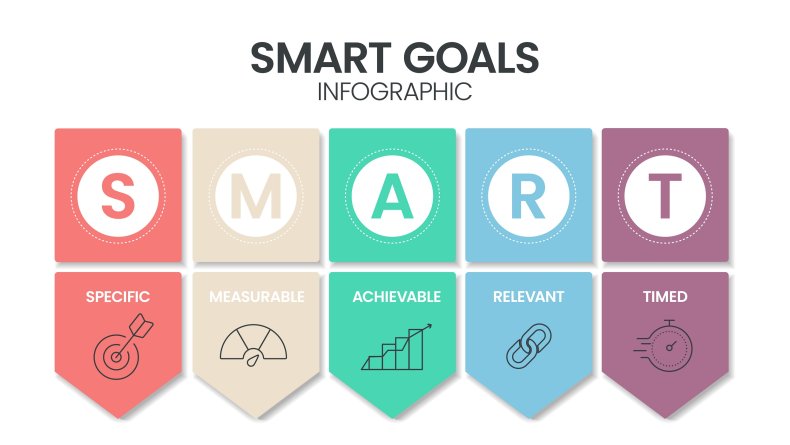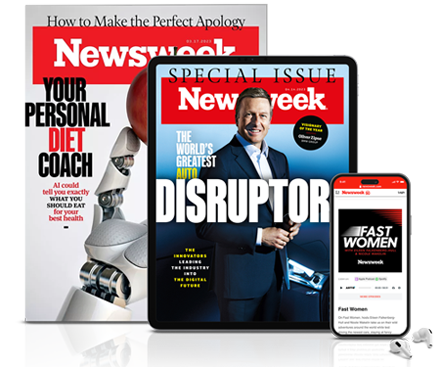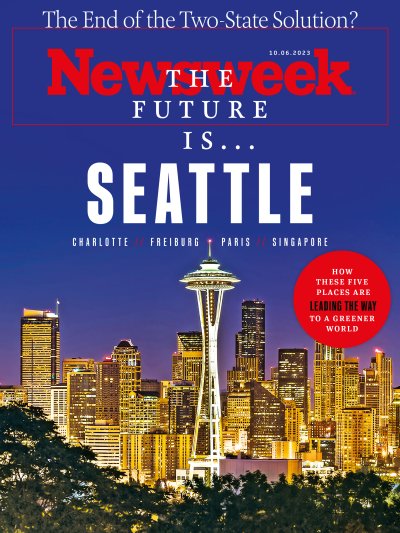Why do some employees do better than others?
According to goal-setting theory, one reason is that they have better, clearer goals. These goals guide their behavior towards better workplace output.
What is goal-setting theory? What makes some goals better than others? And how can managers leverage the science of goal setting to elevate their teams?
Article summary:
|

What Is Goal-Setting Theory?
Goal-setting theory states that goals are essential to motivating workplace performance. Edwin Locke pioneered this organizational psychology theory in 1968 in his paper "Toward a Theory of Task Motivation and Incentives."
Several goal-related traits stand out in Locke's research:
- Specific goals, like "solve 10 software bugs today," are better at motivating performance than vague goals, like "solve as many software bugs as you can."
- Challenging goals, like "earn an 'exceptional' rating on your performance review" motivate higher performance than easy goals, like "earn an 'average' rating on your performance review."
- Engaging goals that align with what employees want give people reasons to push themselves. For example, if an employee is interested in management, set a goal for them to mentor a new hire.
What Is the Science Behind Goal-Setting Theory?
In his 1968 paper on the theory, Locke noticed that research in his field supported several ideas:
- Hard goals lead to better performance than easy goals.
- Specific hard goals lead to better performance than telling people to "do their best."
- Goals motivate behavior.
"The initial research focused on the hypothesis that goals, given the person has the requisite ability, motivation action," Locke later wrote in an article with his research partner, Gary Latham.
One interesting finding in Locke and Latham's research was how people adjusted their effort to match their goals. People applied little effort to easy goals, moderate effort to medium goals and significant effort to hard goals. Effort continued increasing alongside difficulty until a person hit the limit of their capabilities (i.e., an impossible level of difficulty).
In the years since Locke's original exploration, goal theory has developed in many ways. Locke and Latham pick out eight interesting developments in a 2006 paper. Here are several highlights for managers wanting to improve team performance:
- Framing matters. Challenging goals can sometimes be threatening. Managers should communicate to show that their goals are mutually beneficial.
- Goals about learning can be vague. Vague goals related to learning (e.g., I want to learn professional networking) can sometimes be better than specific goals (e.g., I want to earn a 4.0 GPA this semester).
- Goals help group performance. Challenging individual goals can motivate groups and improve teamwork in the workplace.
Five Principles of Goal-Setting Theory
In their 1990 book on goal-setting theory, A Theory of Goal Setting & Task Performance, Locke and Latham identify five principles for better goals:
- Clarity
- Challenge
- Commitment
- Feedback
- Task Complexity
Managers can apply these principles when making goals for team members.
1. Clarity
Goals with clear conditions motivate performance better than vague ones.
Do quantify objectives as much as possible. Relying on data-oriented goals, like "create 10 widgets per day," gives employees an endpoint to strive for. It also lets them measure their current performance against the objective.
Avoid vague and unclear language like "create more widgets than we did last year." This just invites question that slow progress: How many more? How many widgets did we make last year? How am I doing relative to this goal?
2. Challenge
Difficult goals are at the heart of goal-setting theory. Remember that Locke and Latham's research shows a linear connection between difficulty and effort, up to a person's limits.
Do set goals that are difficult for employees, but achievable. This requires knowing your team, their abilities and their limits well. You may need to experiment with different difficulty levels to find challenges that are doable, but not trivial.
Avoid goals that are either too easy or impossible. The former invites employees to give the bare minimum of effort. The latter tells employees not to make any effort at all, because they'll never reach the objective.
3. Commitment
Commitment helps employees push themselves when you present clear and challenging goals.
Do set goals in collaboration with your employees, so they are engaged in the goal-setting process from the beginning. Keep employees up to date on their progress, so they remain engaged in the goal.
Avoid goals that feel like top-down orders. These do nothing to get employees involved or interested in achieving their goals. Never frame goals as threats. Language like "reach this goal or else..." damages commitment.
4. Complexity
Make sure to balance complexity, like you would approach difficulty while setting goals. Goals should be complex enough that they are not trivial, but not so complex that they become unclear.
Do assign simple, achievable goals with clear milestones. Employees can get a sense of satisfaction as they complete these goals, without getting mired in an endless succession of work.
Avoid goals that contain too many tasks. These delay rewards, which hurts commitment. Overly complex goals are also less clear to employees who execute them and managers who measure performance.
5. Feedback
Feedback helps clarify goals, assess how challenging they are and reinforce commitment.
Do tell employees about their progress. Also seek their feedback. Is the objective clear? How challenging does it feel? Do they feel engaged?
Avoid turning feedback into a one-way street; the point is not to tell employees what you need, but to work together to achieve your goals.
Benefits of Goal-Setting Theory
Psychologists have studied goal-setting theory intensely since its inception in 1968. Here are a few key discoveries relevant for the workplace:
- Better employee engagement. A 2017 study explored the relationship between employee engagement and goal setting. The researchers found that following the principles of goal-setting theory led to higher employee engagement and, through it, better performance and job satisfaction.
- Higher productivity. The link between goal setting and productivity goes back to Locke's early research. Although the exact impact is different for each worker and industry, one 2015 study found a 12 to 15 percent productivity boost because of goal-setting theory.
- More proactive workers. Employees at organizations using goal-setting theory are more likely to take the initiative on tasks, according to 2021 paper.
- Better professional development. Goal setting does not just help organizations. A 2013 book chapter describes how individuals can use goal-setting theory to improve soft skills.
Four Examples of Goal-Setting Theory
See the five principles of goal-setting theory in action with these examples:
1. Increasing Productivity
Higher productivity is a textbook example of goal-setting theory in action. However, simply telling an employee that they should be more productive misses the mark on all five principles of goal-setting theory. Remember to:
- Make it clear. Something like, "complete tasks 10 percent faster on average by the end of the quarter."
- Make it challenging without going beyond their abilities. What are their best-performing peers doing? Can they match that?
- Earn their commitment. Higher productivity is good for the company, but how is it good for them? Explain how it can help their career and involve them in the goal-setting process.
- Make it simple enough for you to track and the employee to understand. Avoid goals that take too long to reach.
- Give feedback along the way. Are they meeting expectations? What specific things can they improve to get close to the objective?
2. Onboarding a New Employee
Onboarding is a challenging and sometimes confusing process. Setting goals to help bring on new employees can motivate them to push through the difficult early days at your organization.
Imagine that you are an engineering manager for a team of app developers. You want to revisit your onboarding process for a new employee who needs to be "fully trained" in two months. That's a good long-term goal, but it lacks clarity.
Instead, you can break it down into smaller and clearer goals to move the new hire forward:
- Read and understand the current codebase within the first month.
- Solve five bugs within the first month.
- Commit new, original code four times a week by the end of the second month.
3. Switching Suppliers
Goal-setting theory can help make complex tasks more manageable.
Suppose you manage the supply chain at a gym shoe store. You want to switch suppliers for shoelaces. That is your long-term goal, but it is extremely complex—it has many parts and will take a long time to complete.
You can use goal-setting theory to make smaller and more motivating goals:
- Hear five proposals from other suppliers this week.
- Write a one-page document explaining the benefits of the change by the end of the week.
- Meet with every regional manager affected by the supplier shift by the end of the month.
4. Preparing an Employee for Promotion
You're a manager and you want to sponsor a promising employee in your organization and prepare them for promotion. The long-term goal is to promote them. However, this goal alone might be too complex—it involves many parts which may delay achieving it.
You can use the five principles of goal-setting theory to set milestone achievements towards this larger goal. Those could encourage the employee to:
- Sit it on one client meeting every week.
- Mentor a less experienced employee.
- Increase output by 10 percent.
How To Use Goal-Setting Theory at Work
Remember that goal-setting theory is a scientific theory first. It's meant to explain certain behaviors to scientists. It's not necessarily ready for immediate application in your workplace.
There are several things you can do to bring goal setting into the practical realm in your organization.
1. Quantify Your Work
Clarity is one of the most important parts of goal-setting theory. Without it, you cannot define difficult challenges and feedback falls apart.
Some workplaces can quantify their work easily. For example, a restaurant can look at their nightly profit margins and build goals around those.
However, not every field is like this. Look closely at your work and think about how you can create clear and measurable goals in your field. Speak with other managers to see how they measure productivity.
2. Involve Your Team
Commitment is the third principle of goal-setting theory. Employees who are not committed to their goals will not summon the effort necessary to meet difficult challenges.
Involve your team in the goal-setting process as soon as possible. Find out what goals they want to pursue and think about how those can work for the organization. That way you earn their commitment from the start.
Team involvement does not end once you earn their commitment. Meet regularly to give and receive feedback. You can tweak your goals or update your processes based on what your team says.
3. Set Reasonable Challenges
Science says to set hard, but achievable goals. That sounds great in a research paper, but what does it mean for your workplace and your team?
Look to your highest-performing team members for inspiration. Can everyone else on the team perform at or near their level?
You can also use your professional network and talk to other managers in your field. What do they expect from their employees? How are the highest performers in other organizations doing?
4. Set SMART Goals
SMART goals are:
- Specific
- Measurable
- Achievable
- Relevant
- Timed
Locke and Latham did not create the SMART goal framework, but their influence is clear.
You can use this framework to set goals in your workplace. For each goal you assign an employee, check it against the aspects of SMART and the five principles of goal-setting theory.

Potential Limitations of Goal-Setting Theory
Using goal-setting theory in your organization can increase productivity, improve employee satisfaction and help your workers develop their careers. However, some research has shed light on the darker side of goal setting. Managers should be careful of the following when setting goals:
- Increased burnout. A 2020 paper in the Journal of Applied Psychology found a surprising conclusion: setting goals in the workplace could lead to burnout. But only if the organization's and the individual's goals do not align.
- Unethical behavior. When goals are all that matter, employees may do anything to achieve them. Authors of a 2014 paper theorized that the relationship between high difficulty and high effort may also prompt more unethical behavior from employees.
- Impossible goals. Although difficulty and effort share a linear relationship, according to goal-setting theory, that relationship has a limit. Any increase in difficulty beyond a worker's capabilities decreases performance.
Goal-Setting Theory Improves Leadership Skills
Setting goals that follow the five principles of Locke and Latham's theory can help your teams perform at their best.
Think about how you can work with your employees to set goals that will help them and your organization. Then you can start learning more about how to improve productivity as a leader.








